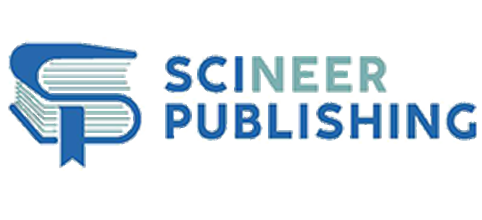The Double-edged Sword Effect of Organizational Structure Stability on the Work Innovativeness of Generation Z Accounting Professionals and Coping Strategies
Abstract
innovation, yet it may also impose constraints that stifle creative thinking. The analysis is supplemented with empirical data and real - world
case studies, offering a comprehensive understanding of this complex relationship. Furthermore, the paper proposes practical strategies to harness the positive aspects of organizational structure stability while mitigating its negative effects, thereby enhancing the work innovativeness
of Generation Z accounting professionals.
Keywords
Full Text:
PDFReferences
[1] Amabile, T. M. (1988). A model of creativity and innovation in organizations. Research in Organizational Behavior, 10, 123167.
[2] Bandura, A. (1997). Self-efficacy: The exercise of control. W. H. Freeman.
[3] Creswell, J. W., & Creswell, J. D. (2018). Research design: Qualitative, quantitative, and mixed methods approaches (5th ed.). Sage
Publications.
[4] Drucker, P. F. (1985). Innovation and entrepreneurship. Harper and Row.
[5] Edmondson, A. (1999). Psychological safety and learning behavior in work teams. Administrative Science Quarterly, 44(2), 350383.
[6] Green, S. (2024). Work-life balance and innovation among Generation Z. Journal of Applied Psychology, 109(2), 223238.
[7] Haynie, J. M., Shepherd, D., Mosakowski, E., & Earley, P. C. (2010). A situated metacognitive model of the entrepreneurial mindset.
Journal of Business Venturing, 25(2), 217229.
[8] Heifetz, R. A. (1994). Leadership without easy answers. Harvard University Press.
[9] Janssen, O. (2000). Job demands, perceptions of effort-reward fairness and innovative work behavior. Journal of Occupational and Organizational Psychology, 73(3), 287302.
[10] Lumpkin, G. T., & Dess, G. G. (2006). Clarifying the entrepreneurial orientation construct. Academy of Management Review, 21(1),
135172.
[11] Mintzberg, H. (1983). Structure in fives: Designing effective organizations. Prentice-Hall.
[12] Rogers, E. M. (2003). Diffusion of innovations (5th ed.). Free Press.
[13] Scott, S. G., & Bruce, R. A. (1994). Determinants of innovative behavior: A path model of individual innovation in the workplace. Academy of Management Journal, 37(3), 580607.
[14] Spreitzer, G. M. (1995). Psychological empowerment in the workplace: Dimensions, measurement, and validation. Academy of Management Journal, 38(5), 14421465.
[15] Tushman, M. L., & O'Reilly, C. A. (1996). Ambidextrous organizations: Managing evolutionary and revolutionary change. California
Management Review, 38(4), 830.
[16] West, M. A., & Farr, J. L. (1990). Innovation at work. In M. A. West and J. L. Farr (Eds.), Innovation and creativity at work (pp. 316).
Wiley.
[17] Woodman, R. W., Sawyer, J. E., & Griffin, R. W. (1993). Toward a theory of organizational creativity. Academy of Management Review,
18(2), 293321.
[18] Zhou, J. (2023). Organizational flexibility and innovation: A multilevel perspective. Academy of Management Journal, 66(4), 1315
1340.
DOI: http://dx.doi.org/10.70711/memf.v2i7.7162
Refbacks
- There are currently no refbacks.

